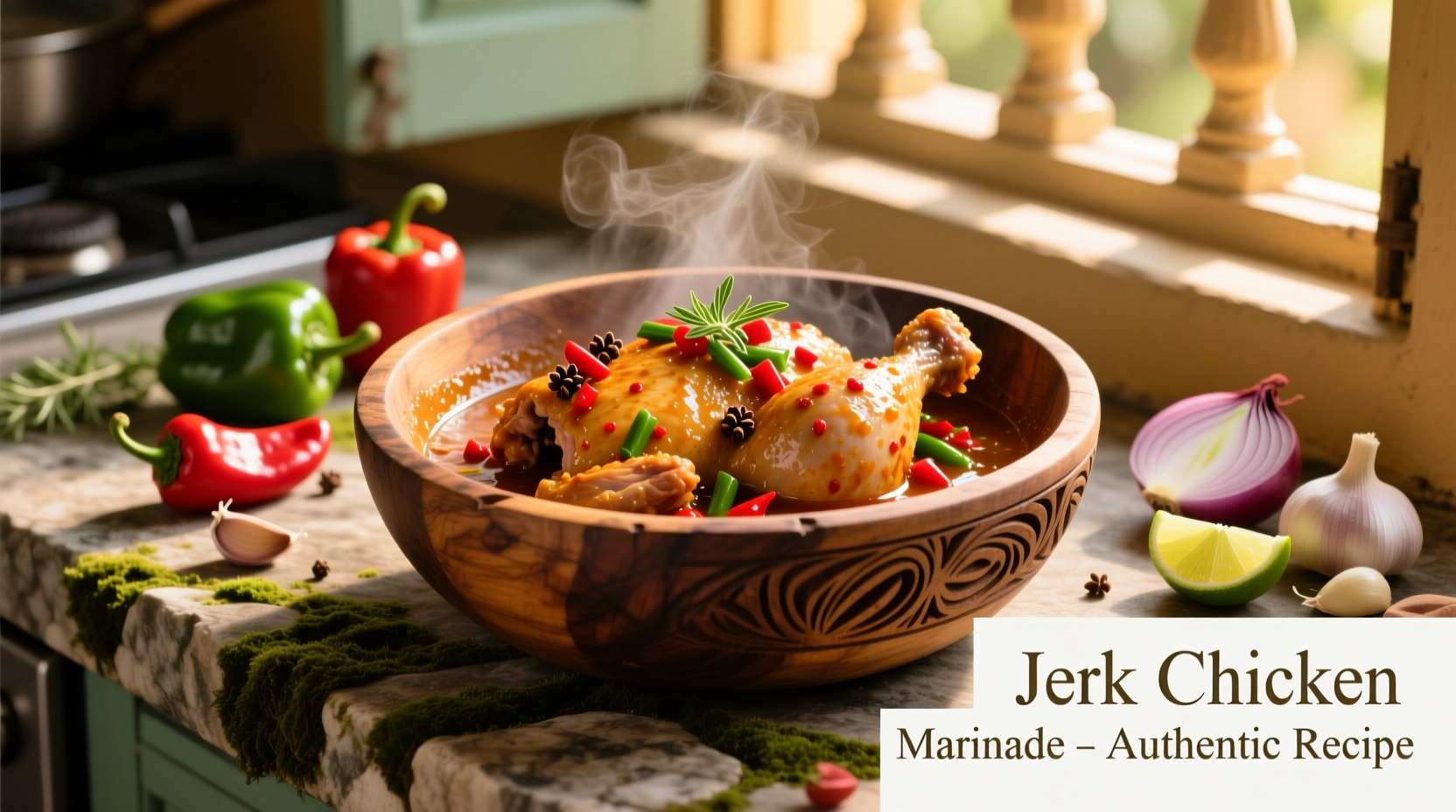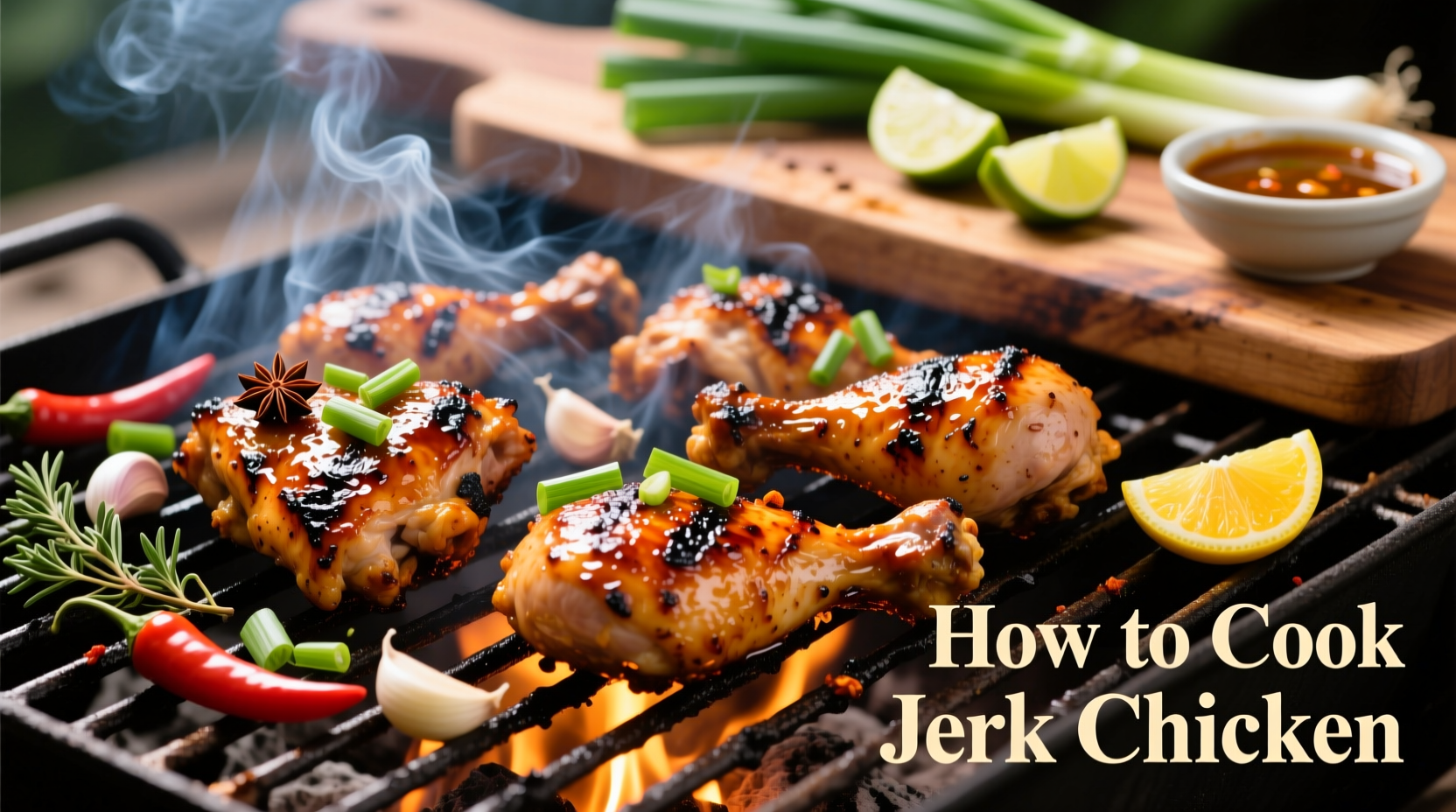The most authentic way to cook jerk chicken involves marinating bone-in chicken pieces in a spicy Jamaican jerk seasoning blend for at least 4 hours (preferably overnight), then slow-grilling over pimento wood or charcoal with allspice berries for that distinctive smoky flavor. Key ingredients include Scotch bonnet peppers, allspice, thyme, and scallions. For home cooks without access to traditional pimento wood, using allspice wood chips in a charcoal grill or adding ground allspice to a dry rub creates remarkably authentic results.
Unlock Authentic Jamaican Jerk Chicken at Home
Nothing compares to the vibrant, complex flavors of properly prepared jerk chicken—the fiery yet aromatic specialty that originated with Jamaica's Maroon communities centuries ago. While many restaurants serve watered-down versions, authentic jerk cooking combines precise spice ratios with traditional smoking techniques that transform simple chicken into something extraordinary.
The Cultural Roots of Jerk Cooking
Jerk cooking traces back to Jamaica's indigenous Taino people and African Maroons who fled slavery in the 17th century. These communities developed the technique of slow-cooking meat with pimento wood (allspice trees) to preserve food in Jamaica's tropical climate. The word "jerk" likely comes from the Spanish charqui (dried meat) or the action of jerking meat over fire.
| Historical Period | Key Jerk Cooking Developments |
|---|---|
| Pre-1655 | Taino people used pimento wood for barbecuing meat called barbacoa |
| 1655-1739 | African Maroons combined Taino techniques with African spices creating modern jerk |
| 1960s-Present | Jerk spread from rural Jamaica to global popularity through tourism and migration |
Essential Jerk Seasoning Ingredients (Authentic Ratios)
Most commercial jerk seasonings miss the mark by overemphasizing heat at the expense of complexity. The true balance comes from these proportions:
- Allspice (pimento) - 3 tablespoons (the essential backbone flavor)
- Scotch bonnet peppers - 4-6 whole peppers (seeds removed for less heat)
- Green onions - 8 stalks, chopped
- Fresh thyme - 3 tablespoons leaves only
- Garlic - 6 cloves
- Ginger - 2 tablespoons freshly grated
- Soy sauce - ¼ cup (traditional addition for umami)
- Lime juice - 3 tablespoons
- Nutmeg - 1 teaspoon freshly grated
- Cinnamon - ½ teaspoon
- Brown sugar - 2 tablespoons
- Black pepper - 1 tablespoon freshly cracked

Traditional vs. Modern Cooking Methods
Authentic jerk chicken requires slow cooking over pimento wood, but most home cooks need practical alternatives. Understanding these methods helps you choose the best approach:
Pimento Wood Grilling (Most Authentic)
Traditional jerk pits use pimento wood (allspice trees), which infuses the chicken with distinctive aromatic compounds. If you can find allspice wood chips, soak them for 2 hours then add to your charcoal grill. Maintain a low temperature (275-300°F) for 45-60 minutes.
Charcoal Grill Method (Best Home Alternative)
When pimento wood isn't available, create a two-zone fire with charcoal. Place soaked allspice berries (2 tablespoons) directly on coals for smoke infusion. Position chicken on the cooler side of the grill, cover, and cook until internal temperature reaches 165°F.
Oven Method (Indoor Option)
For indoor cooking, add 1 tablespoon ground allspice to your rub and broil on the lowest rack position. Place a cast-iron skillet with soaked allspice berries on the bottom oven rack to create aromatic steam during cooking.
Step-by-Step Jerk Chicken Preparation
Marinating Process (Critical Step)
Authentic jerk requires proper marinating time for flavors to penetrate:
- Score chicken pieces deeply (bone-in thighs and drumsticks work best)
- Blend all seasoning ingredients into a paste using food processor
- Coat chicken thoroughly, massaging paste into scores
- Refrigerate uncovered for 4-12 hours (overnight preferred)
Cooking Timeline
- Prep time: 15 minutes + 4+ hours marinating
- Grill time: 45-60 minutes at 275-300°F
- Resting time: 10 minutes before serving
Pro Tips for Authentic Flavor (What Most Recipes Miss)
Based on research from Jamaica's Blue Mountains where jerk originated, these professional techniques make the difference between good and exceptional jerk chicken:
- Use whole allspice berries - Freshly ground allspice provides dramatically better flavor than pre-ground
- Control the heat - Scotch bonnet peppers should provide warmth, not overwhelming heat (remove seeds for milder version)
- Don't rush the marinating - Less than 4 hours won't allow flavors to properly penetrate
- Low and slow cooking - High heat burns the sugar in the marinade before flavors develop
- Rest before serving - Essential for juicy results as juices redistribute
Common Jerk Chicken Mistakes to Avoid
Food safety data from the USDA shows that improper poultry handling causes 20% of foodborne illness cases. Avoid these critical errors:
- Cross-contamination - Never reuse marinade that contacted raw chicken (boil for 2 minutes if using as baste)
- Undercooking - Chicken must reach 165°F internally (use thermometer, not guesswork)
- Over-marinating - More than 24 hours makes chicken mushy from acid breakdown
- Skipping resting time - Cutting immediately causes juices to escape, drying out meat
Traditional Serving Suggestions
Authentic Jamaican jerk chicken is traditionally served with:
- Festival (sweet fried dumplings)
- Steamed cabbage with carrots
- Rice and peas (kidney beans in coconut milk)
- Harder bread (sweet fried bread)
- Fresh mango or pineapple
For beverage pairings, a crisp lager or ginger beer cuts through the heat while enhancing the spice complexity. Avoid overly sweet drinks that clash with the nuanced seasoning.
Storage and Reheating Tips
Properly stored jerk chicken maintains quality for 3-4 days in the refrigerator according to FDA guidelines. For best results:
- Cool completely before refrigerating (within 2 hours of cooking)
- Store in airtight container with some cooking juices
- Reheat gently in oven at 300°F until warmed through
- Never microwave jerk chicken (makes skin soggy and alters flavor)











 浙公网安备
33010002000092号
浙公网安备
33010002000092号 浙B2-20120091-4
浙B2-20120091-4